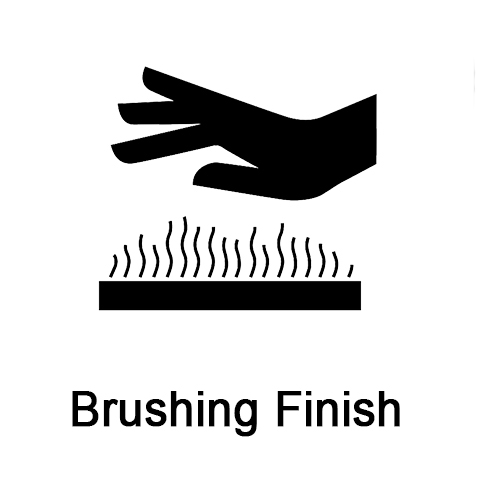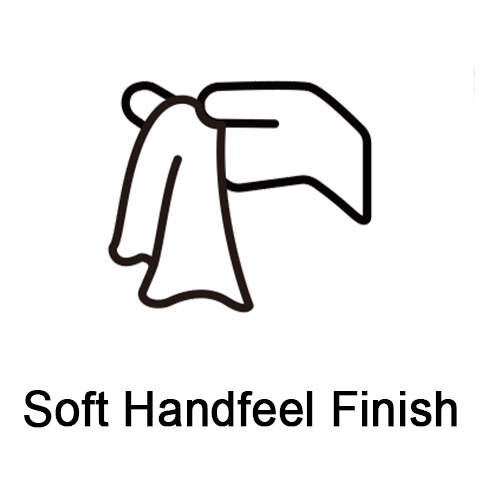WOVEN FABRIC PRINTING AND DYEING PROCESSES
2019-04-17
※ Woven fabric printing and dyeing process
1. Inspection and sewing on greige fabric:
A. Greige fabric is sewed piece by piece into large rolls or into container. The quantity of one cylinder is varies by different quality of fabric.
B. The inspection mainly controls the quality of the grey fabric to see if there are abnormalities such as drawing, weft, dead fold, yellow spot and mildew, and it is necessary to pay attention to whether the fabric is consistent with the requirements. Under normal circumstances, a batch number is required to pay attention to the inspection.
2, Desizing:
A. When weaving, in order to avoid pilling on the yarn, the yarn was slurried, so it is necessary to desizing before dyeing.
B. If the desizing is not completed, there will be spots such as color flowers and plaques on the fabric surface after dyeing.
C. After desizing, it is generally washed with water. Otherwise, the pH value of the fabric will be high and unexpecting issues such as poor dyeing quality will be occurred.
D. There are two types of desizing methods: in-cylinder desizing and continuous desizing. Generally, the former has better desizing effect, but the efficiency is low.
3. Dyeing:
(1) Chemical fiber dyeing method:
A. Normal temperature dyeing: the general temperature is below 100 ° C, mainly used for dyeing semi-calendering nylon taffeta, nylon oxford, nylon twill and so on. This method is easy to cause head and tail color difference, left-middle-right color difference and crease.
B. High temperature dyeing: the temperature is generally about 130 ° C, mainly used to dye polyester taffeta, N66, nylon matte fabric, polyester oxford (filament), etc., this method is easy to head and tail color difference, left-middle-right color difference, crease and color points.
C. Overflow dyeing: the temperature is about 100 ° C to 130 ° C, mainly used to dye polyester such as pongee, jeanette, polyester oxford, Taslan, nylon/polyester interwoven, etc. This method is easy to cause such as color flowers, chicken claw marks, and straight strips.
D. Warp beam dyeing: It is suitable for all kinds of fabric types, but it should be used reasonably according to the quality requirements. The dyeing temperature can be controlled above 100°C to 130°C. This method is easy to make such as shallow edges and layer differences.
(2) Dyeing methods of other fabric types:
A. Cotton dyeing: Generally, it is dyed by continuous dyeing(requires large quantity), pad dyeing (large batch or small quantity), overflow dyeing (medium and small quantity). Reactive dyes (better in fastness), direct dyes (poor fastness), and vat dyes (best in fastness) are also available.
B, N/C, C/N dyeing: generally use overflow dyeing, dyeing cotton firstly then dyeing nylon, dyeing cotton with reactive dyes, dyeing nylon with acid dye (good fastness). There is also a direct dye dyed in one time (poor fastness).
C, T/C, C/T dyeing: generally use overflow dyeing, dyeing polyester after dyeing first, disperse dye for polyester, reactive dye for cotton (good fastness). It is also dyed by long car, dyed once, using direct dye (poor fastness).
(3) Dye classification:
A, acid dye: used to dye nylon fabrics, generally to fix color to improve color fastness, but also pay attention to the choice of dye combination and the use of a reasonable dyeing process. Improper use of the fixing agent or too high a dosage will result in a hard hand.
B. Disperse dyes: used for dyeing polyester fabrics. Generally, it is necessary to use reduction washing to improve the color fastness. At the same time, attention should be paid to the choice of dye combination and the use of reasonable dyeing process. Disperse dyes pay special attention to the problem of transfer dyeing and sublimation fastness.
C, Reactive dyes and direct dyes: belong to low temperature type dyes.
4, Drying: (generally divided by roller drying and non-contact drying) A, non-contact drying with or without contact dryer and setting machine, no contact between fabric and heater, by hot air jet Go to the fabric to achieve the purpose of drying. Mainly used for drying overflow dyed products to maintain the fluffy and rich feel of the fabric. The cost is higher than the drum drying. B. Drum drying: The cloth and the roller are in direct contact, and the heating roller is used to achieve the purpose of drying the cloth. Mainly used for dyeing and warp beam dyeing (such as nylon, polyester, nylon, polyester, oxford, etc.), Taslon can also be dried on the tumble dryer (but only first) Bake six or seventy percent to avoid causing the hand to feel too hard. Then go to the setting machine to do the watering process to increase the watering. Drying costs are lower.
5, Middle inspection:
A. The medium test should test the color fastness of the fabric, and at the same time pay attention to check the quality of the cloth, such as: crease, color difference (color difference, cylinder difference, difference), color flower, color point, dirt, oil stain, drawn yarn , weft file, warp, and so on. B. Do not allow the control of defective products to enter the next section to prevent the increase of cost. Because the fabric is not repaired or repaired after the finishing of the fabric, it is very difficult to check it. Therefore, the inspection is very important. C. Re-arrange and sew the fabric before entering the work section.
6, Stereotypes:
A. After the fabric is shaped, the physical properties and chemical properties are relatively stable. For example, shrinkage, width, warp and weft are not easy to change, and the fabric surface is relatively flat. At the same time, in the final section of this section can also do some functional processing, such as splashing water (waterproof), soft, resin, flame retardant, antistatic, super water (Teflon treatment), moisture wicking, antibacterial and deodorant, etc.
B, because the setting temperature is higher, it should pay attention to the color change before and after stereotype, especially some sensitive colors, such as gray, military green, shallow khaki and so on. The product generally requires alignment with the finalized color.
C. The shaping can control the width, warp and weft density, shrinkage rate, etc. of the cloth, especially the control of the shrinkage rate, which directly affects the processing cost, so special attention should be paid. (Our order shrinkage requirements are generally 3% shrinkage of washing, strict requirements for washing shrinkage of 2%). The main factors affecting the shaping effect are the three factors of temperature, speed and overfeed.
D. Introduction to several types of processing:
- splashing water to make the fabric waterproof and dustproof;
- soft styling makes the fabric feel soft and smooth, but pay attention to whether the fabric will slip. Splashing water and soft styling can be done at the same time, making the fabric both waterproof and soft, but softeners can affect the water level.
- resin stereotypes are mainly used for fabric fixing and stiffening of the fabric. Some resins contain formaldehyde, so pay attention to the selection; splashing water and resin setting can be done at the same time, and the resin can promote the water-repellent agent.
- flame retardant setting has an auxiliary effect on the flame retardant function of the fabric. Flame retardant can also be used for water splashing at the same time, but special attention should be paid to the selection of the water repellent, otherwise the effect on the flame retardant effect is too great.
- anti-static setting allows the fabric to have anti-static function, which can be done at the same time as the water-spraying, but has an effect on the water-repellent effect.
- moisture wicking stereotypes allow the fabric to quickly absorb sweat, and wear sportswear to have greater comfort. Can't do it at the same time as splashing water.
- antibacterial and deodorant processing mainly makes the fabric have antibacterial function, mainly used in medical facilities.
- super splash water stereotype (also called Teflon treatment): better waterproof and dustproof than ordinary splashing water, and also has oil-proof function. Generally, guests will be asked to pass the DuPont tag.
7, Calendering and Coating:
A, the role of calendering 1 soft touch 2 to make the fabric calender surface more flat, reduce the gap between the fabric fibers to prevent the effect of velvet or to achieve higher water pressure when applying glue 3 to make the rubber surface smoother Beautiful 4 calendered surface has a bright effect.
B. The three elements of calendering are temperature, speed and pressure. Calendering causes a change in the color of the fabric.
C. Gluing can make the fabric waterproof, anti-velvet, windproof, etc., as well as the effect of fixing the fabric, increasing the look and feel, and thickening the hand, making the fabric more useful.
D, the glue has acrylic (also known as AC, PA), PU glue, moisture permeable plastic, can be processed into transparent glue, white glue, silver glue, color glue, pearl glue and so on. It is also possible to add corresponding raw materials to the glue to have anti-ultraviolet, flame retardant, anti-yellowing and the like.
E, glue should pay attention to control water pressure, feel (thickness, soft and hard), uniformity of glue, peel strength of rubber, washable (whitening), whiteness and so on. Also pay attention to the rubber surface, rubber marks, dryness and so on. Pay attention to the effect of the rubber surface sealing tape (PVC strip / PU strip).
8. Fitting PVC: Pay attention to the thickness and feel of the lamination, the peel strength of the lamination, and the quality of the rubber surface.
9, Other processing: dry PU (release paper), composite, PU leather and so on.
10, Washing: some cotton, N/C, T/C also through the water washing process. The washing is divided into three types: ordinary washing, soft washing, and enzyme washing (removing the floating hair on the surface of the cotton).
11, Final Inspection: inspection of finished product quality, grades, and packaging for shipment, generally to make inspection records and stickers. Any problems should be promptly reported to the salesperson to communicate with the customer in a timely manner.







